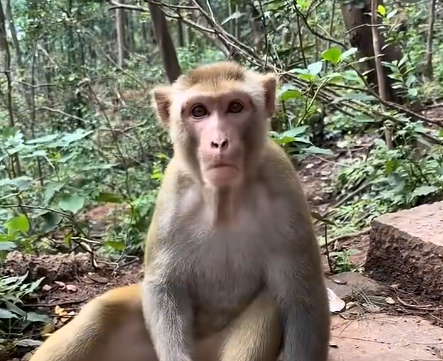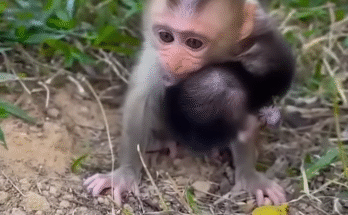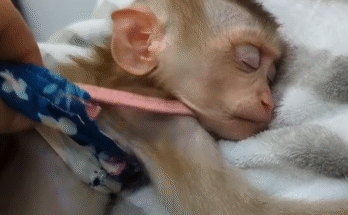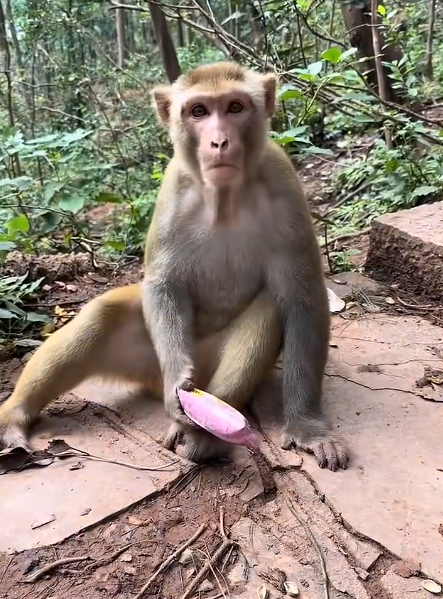
Deep in the green heart of the jungle, where sunlight flickered through thick leaves and parrots painted the skies with their bright wings, there lived a monkey unlike any other. His name was Kimo, and while most monkeys loved climbing trees, rolling in the dirt, splashing in the river, or stealing fruit without a second thought, Kimo had one unusual trait: he was mysophobic.
That meant Kimo had a strong dislike for anything dirty, messy, or sticky. And for a monkey, that was a strange thing indeed.
The Monkey With That Expression
Whenever Kimo came across something unclean, he made a face so unique that the whole jungle knew him for it. His little nose would wrinkle, his lips would curl back, and his wide eyes would bulge in shock, as though the very sight of mud or grime was the end of the world.
The troop called it “that expression.”
If another monkey accidentally smeared fruit juice on his fur, Kimo would freeze, let out a horrified squeak, and immediately run off to scrub himself clean on a patch of broad, smooth leaves.
If a baby monkey climbed on him with muddy paws, he would yelp dramatically, leap three branches away, and groom himself furiously until every last speck of dirt was gone.
And if he saw someone digging through the soil for tasty bugs? He would clutch his head, squeal in disbelief, and look as though the jungle had fallen apart.
Yes, Kimo was the mysophobic monkey — and the monkey with that unforgettable expression.
The Daily Struggles
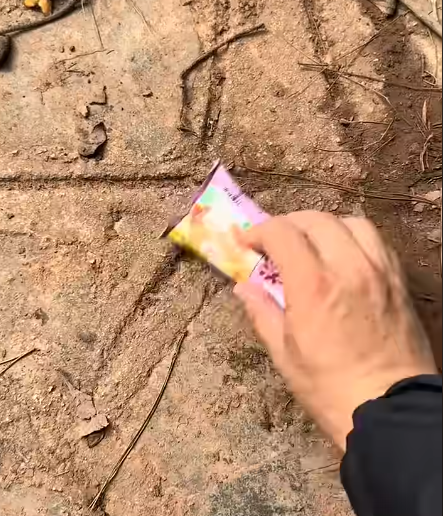
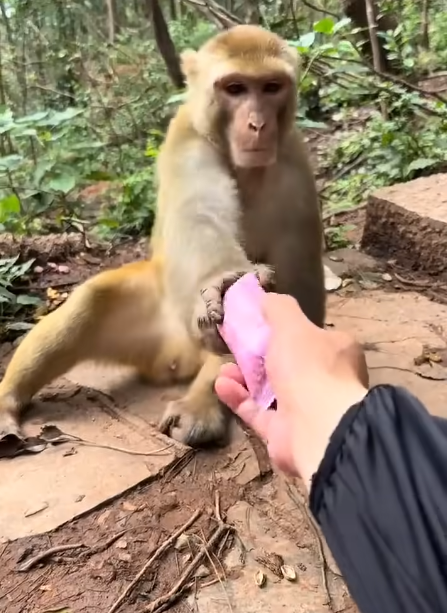
Life in the jungle was not easy for a monkey like Kimo.
Other monkeys enjoyed juicy mangoes, letting the sticky pulp drip down their chins. But Kimo refused. He would only eat fruits he could peel neatly, carefully tossing the skin away and licking his fingers clean immediately after.
While his friends played in the river mud on hot afternoons, coating themselves in wet clay to cool down, Kimo stayed high in the trees, shaking his head in disapproval. “Ugh, dirty, dirty, dirty,” he muttered to himself, fanning his face with a leaf.
Even grooming — the sacred bonding activity for monkeys — was hard for him. Grooming meant touching another monkey’s fur, picking out dirt, or even swallowing a tiny bug or two. Kimo tried, but every time he saw something wriggling in someone’s fur, his famous expression returned, and he had to stop.
The troop often teased him. “Careful,” they would joke, “don’t let a leaf touch you, or Kimo will faint!”
But Kimo didn’t mind. He preferred being clean, even if it meant being a little different.
The Day of the Storm
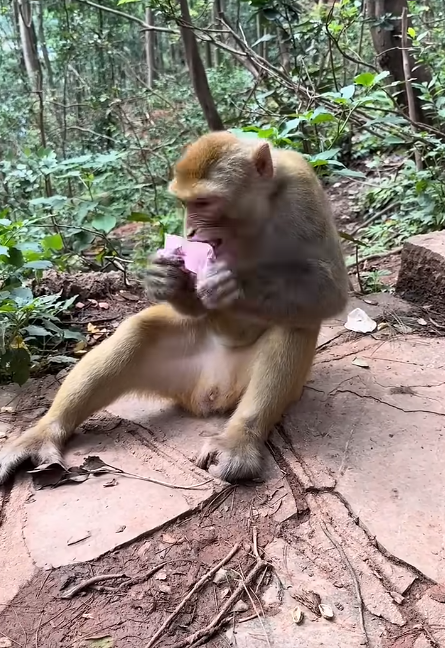
One fateful afternoon, the sky turned dark. Clouds gathered, heavy with rain, and thunder rolled across the jungle. The troop sensed the coming storm and scrambled to take cover under thick branches.
But Kimo wasn’t prepared. He had spent the whole morning cleaning himself after brushing against a sticky jackfruit, and while the others had built temporary shelters of leaves, he had been too busy fussing over his fur.
Then the storm came.
Rain poured down in sheets, turning the forest floor into a swamp of mud. Trees shook, and fruits splattered onto the ground. Monkeys huddled together, holding tight to their branches.
Kimo, caught out in the open, screamed in horror as drops of water drenched his fur. Worse — the rain mixed with dirt, splashing mud onto his face and tail. His eyes widened. His lips curled. His whole body trembled. That expression spread across his face like never before.
“DIRTY! TOO DIRTY!” he screeched, hopping from branch to branch, desperate to find a clean, dry place. But everywhere he went, the storm followed.
A Lesson in the Mud
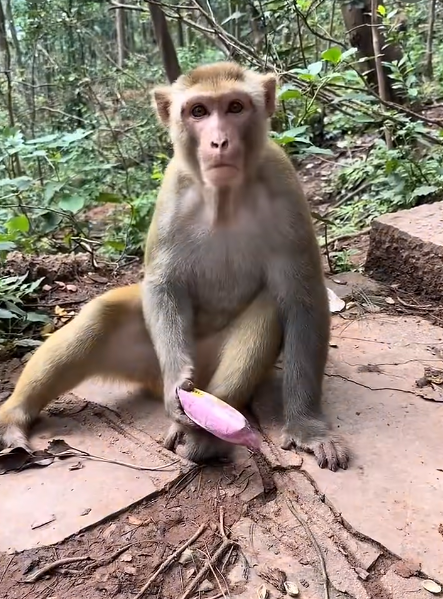
At last, Kimo slipped. His foot landed on a wet branch, and down he tumbled — right into the mud.
SPLASH!
He sat there in shock, coated head to toe in brown sludge. His eyes were wide, his mouth open in disbelief. His troop gasped from the trees, watching in silence.
For a moment, Kimo thought his world was ending. His precious fur was ruined. He was sticky, wet, and filthy. That expression twisted across his face, more dramatic than ever before.
But then something unexpected happened.
The baby monkeys, who had always giggled at his fussiness, slid down beside him. They splashed happily, rolling in the mud, and invited him to join. At first, Kimo refused. He tried wiping himself with leaves, shaking his fur, even climbing back up — but it was useless. The mud clung stubbornly.
Finally, exhausted, Kimo gave up. He sat still.
And then, he noticed something.
The mud was… cool. Refreshing. His aching muscles relaxed as it coated his skin. His friends were laughing, leaping, and playing, splattering mud at each other without a care. For once, instead of fighting the mess, Kimo simply let it be.
And slowly — unbelievably — a smile broke across his face.
A New Expression
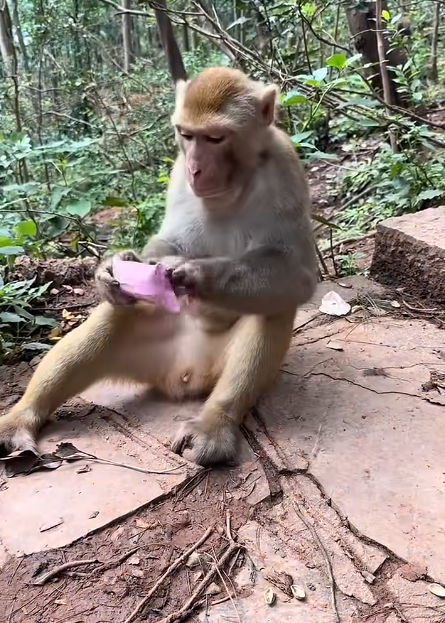
When the storm passed and the sun returned, the troop climbed out of the mud, shaking themselves dry. The others looked at Kimo, expecting his usual panic, expecting him to scrub and scream.
But Kimo only sat there, blinking. His fur was still dirty, but he wasn’t upset. In fact, his expression was different — softer, calmer, almost peaceful.
For the first time, he realized that being a little messy wasn’t the end of the world.
Sure, he still preferred to be clean. He still washed himself carefully at the river later that evening. But from that day on, the jungle knew him not just as the mysophobic monkey with that expression, but as the monkey who learned to laugh at dirt — sometimes.
Epilogue: Balance in the Jungle
Kimo never fully lost his quirks. He still wrinkled his nose when mango juice dripped on his fur. He still leapt away when someone threw mud too close. And yes, his famous expression never disappeared — it still made the troop laugh whenever they saw it.
But he also discovered balance. On hot days, he sometimes joined the babies in a splash of mud, though he cleaned himself afterward. When rain fell, he didn’t panic — he let the drops wash over him, knowing he would dry again.
And most importantly, he realized that life wasn’t just about being spotless. It was about playing, bonding, and sometimes getting messy in the process.
Kimo was still the mysophobic monkey. But he was also something more: the monkey who found joy in both cleanliness and chaos, and who showed the jungle that even the strangest quirks could lead to the funniest, most unforgettable expressions.
